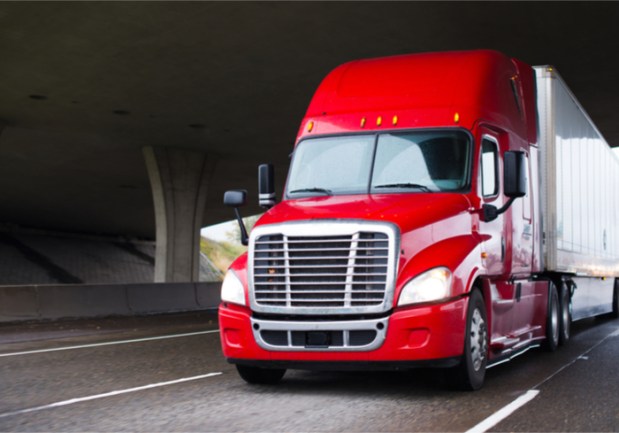Driverless Trucks Hog the Highway to an Autonomous Vehicle Future

Driverless cars are indeed coming to roads soon enough — the U.K.’s transport secretary, in fact, recently predicted that those vehicles would appear there within four years. Even so, it might be autonomous trucks — as in semi-trailer trucks that haul freight — that hit the highways in greater numbers initially, perhaps having a quicker impact on payments and commerce, and even autonomous vehicle technology.
The looming shortage of freight drivers is one reason behind some of the recent developments of self-driving trucks. That includes Volvo’s recent unveiling of a self-driving electric truck called Vera (which is of Russian origin and means “faith,” as in “faith in the future”). It has no driver’s cab, but can pull loads weighing up to 32 tons and can be attached to any standard trailer, the automobile company said.
FedEx is getting into the game, too. The company said it has ordered 20 Tesla semi-trucks, the fully electric trucks that are slated for production in 2019, for FedEx Freight operations. According to FedEx, the Tesla rigs will offer increased safety at a reduce cargo cost (the 4,000 or so traffic deaths each year in the United States that involve trucks are nearly all caused by human error). The trucks have surround cameras and onboard sensors, which will help aid in avoiding objects while also enabling enhanced autopilot for automatic emergency braking, automatic lane keeping and lane departure warnings. Tesla also said that electric energy costs are half that of diesel.
Uber tried, and so far has failed, to make a name for itself in the fledgling autonomous truck industry. The ride-sharing pioneer launched its autonomous truck deliveries in May, completing the first hauls driven in tandem with both human drivers and self-driving trucks in Arizona. However, in July, the company announced it was abandoning the project, choosing to focus its autonomous vehicle technology solely on cars.
Large Market
Still, that leaves not only Tesla and Volvo still active with self-driving trucks, but also such companies as Peterbilt, Waymo, Embark, TuSimple and Daimler. “We are trying to get self-driving technology out on the road as fast as possible,” Alex Rodrigues, Embark’s chief executive, told The New York Times. “Trucking needs self-driving and self-driving needs trucking.”
As recounted there, U.S. trucking is a $700 billion industry, and what happens in freight hauling — fuel prices, driving regulations, workforce availability — can impact the cost of most products, and determine how soon a consumer will receive a retail item bought online. Trucking it already a highly technical industry, with telematics and closed-loop payments the norm, and mobile payment technologies making significant advances.
And self-driving trucks are likely to appear on roads before self-driving taxis, according to Waymo, which is owned by Google parent Alphabet.
It is too early to say with certainty whether autonomous trucking technology will find favor in self-driving cars, but it’s a good bet that some will, and that some lessons learned from the rise of the driverless freight haul will also influence those smaller vehicles.
Those driverless trucks are already making deliveries. In a recent Embark test described by Wired, that included taking “smart” refrigerators from Texas to a distribution center in Southern California (a human supervisor rode along to monitor the test and provide a safety backup).
Trucking Proposition
One reason driverless trucks appear likely to beat autonomous cars to mainstream use is the relatively simplicity of the proposition. As Wired put it, “making a robot that can drive itself on the highway, where trucks spend nearly all their time, is relatively easy. You don’t have to account for pedestrians, cyclists, traffic lights or other variables. The big rig just has to stay in its lane and keep a safe distance from fellow travelers.”
But driverless trucks also present significant challenges and unresolved issues — questions that gain importance once that truck emerges from the relatively confined areas of ports and cargo bays and hits the open road. How will insurance work, for instance? Victims of accidents that involve truck drivers can potentially sue the driver, his or her employer and even the company that hired the freight hauler. What happens when the driver is taken out of the equation?
Technical issues also need more work, according to observers.
“There are also potential problems with the sensor being on top of a truck’s cab,” reads an analysis from ATBS, which provides business services to truckers. “The sensors will consist of a combination of both radars and cameras that will be used to help navigate and control the truck. If the sensor is on top of the cab of the truck, it has the potential to be blinded by the sun, have problems distinguishing between cars and large signs, and become impaired by inclement weather. Ultimately, all of this could lead to problems for trucks in city settings, where there are constant stops, turns and tight spaces.”
ATBS predicted that the next decade will bring “fully functioning” self-driving trucks to highways. Truck drivers — at least some of them — will still have jobs, but their responsibilities will certainly change. “Think of the job of a truck driver slowly looking more and more similar to the job of an airplane pilot. The truck will be able to drive on its own, but the population will feel a lot safer knowing somebody is behind the wheel just in case.”
Something might be truly lost to society if all those self-driving semis don’t sound their horns in response to the requests of children or temporarily childish adults. But there is no doubt that freight hauling will play a significant role in the future of autonomous driving.
